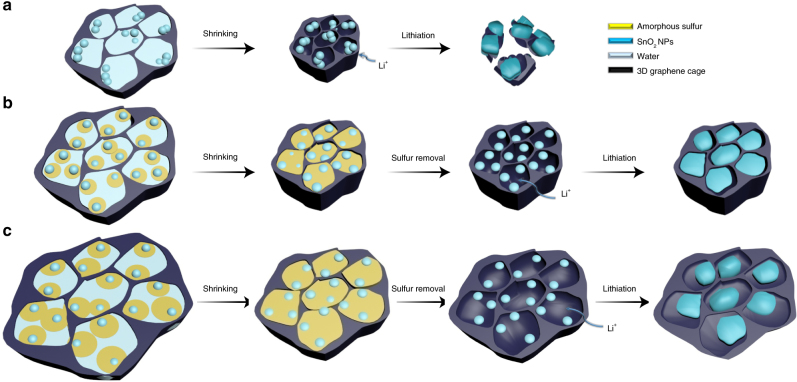Fig. 1.
Sulfur template control of incorporated void space. a Schematic of the limited space produced after the shrinkage of a 3D graphene assembly, leading to cracking of the graphene cage and electrode pulverization when the SnO2 expands during the lithium storage process. b When an appropriate amount of sulfur is used as a sacrificial template for incorporating void space, the SnO2 has enough space for lithiation. Note that sulfur removal could result in the production of the smallest sufficient void space, thus achieving high volumetric performance. c The removal of excess sulfur would introduce a large void space and compromise the volumetric capacity

